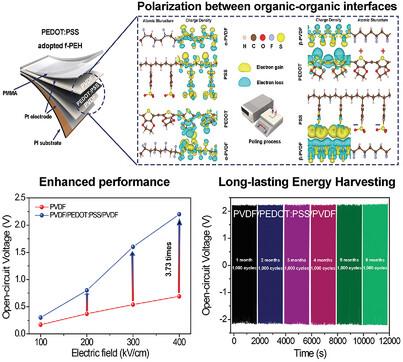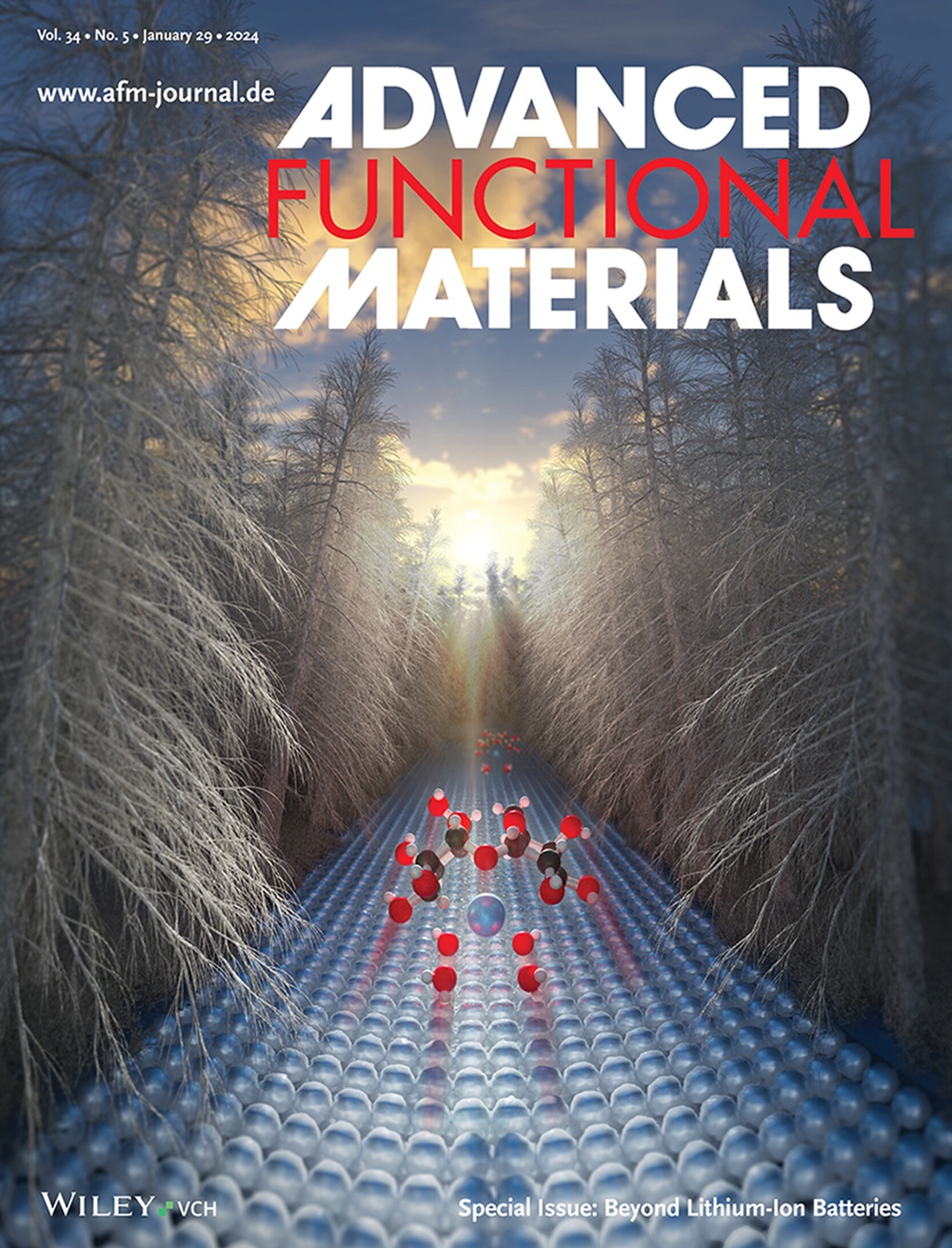通过在压电聚合物中插入导电层实现持久、稳定和增强型能量收集
IF 18.5
1区 材料科学
Q1 CHEMISTRY, MULTIDISCIPLINARY
引用次数: 0
摘要
本文章由计算机程序翻译,如有差异,请以英文原文为准。

Long-Lasting, Steady and Enhanced Energy Harvesting by Inserting a Conductive Layer into the Piezoelectric Polymer
Flexibility, higher piezoelectric performance, and long-lasting stability of devices have a great demand in next generation energy technologies. Polyvinylidene fluoride (PVDF) polymer has a greater mechanical flexibility, but it suffers from low piezoelectric performance. Herein, sandwich-structured piezoelectric film (SS-PF) is designed by inserting the conductive poly(3,4-ethylenedioxythiophene) polystyrene sulfonate (PEDOT:PSS) layer between two PVDF layers. The SS-PF based flexible piezoelectric energy harvester (f-PEH) generates higher voltage and current of 3.73 times and 4.64 times than the pristine PVDF film type f-PEH. Moreover, the SS-PF based f-PEH shows no degradation in the output voltage confirming the excellent long-lasting stability over 6 months. DFT simulation shows the occurrence of intermolecular forces between the PVDF/PEDOT:PSS interface. The electric field-dependent charges alignment in PEDOT:PSS may induce the charge accumulation at the PSS-PVDF interface and charge depletion at the PEDOT-PVDF interface leading to the change in orientation of molecular structure in PVDF. Next, the SS-PF based f-PEH is tested for a vibration sensor to monitor the vibrations of curvy pipes and machines, and its output voltages are comparable with the commercial PVDF vibration sensor to confirm the real-time use. The results present a novel design strategy, indicating a new direction for investigating piezo-polymer-based f-PEH.
求助全文
通过发布文献求助,成功后即可免费获取论文全文。
去求助
来源期刊

Advanced Functional Materials
工程技术-材料科学:综合
CiteScore
29.50
自引率
4.20%
发文量
2086
审稿时长
2.1 months
期刊介绍:
Firmly established as a top-tier materials science journal, Advanced Functional Materials reports breakthrough research in all aspects of materials science, including nanotechnology, chemistry, physics, and biology every week.
Advanced Functional Materials is known for its rapid and fair peer review, quality content, and high impact, making it the first choice of the international materials science community.
 求助内容:
求助内容: 应助结果提醒方式:
应助结果提醒方式:


